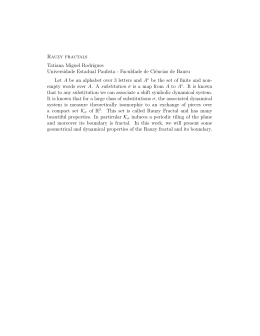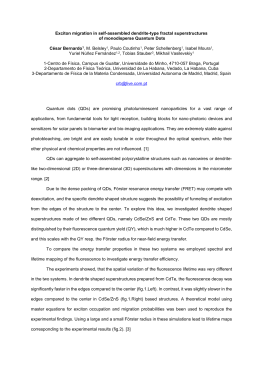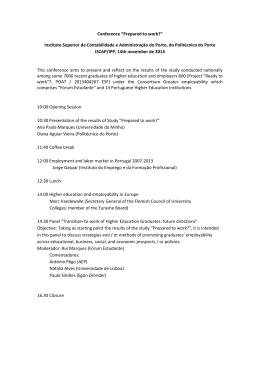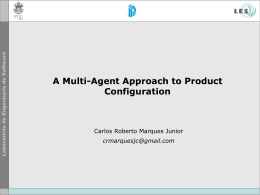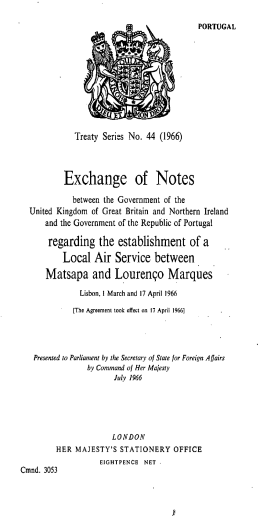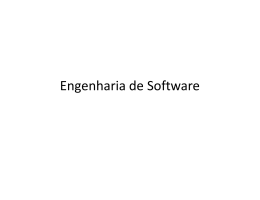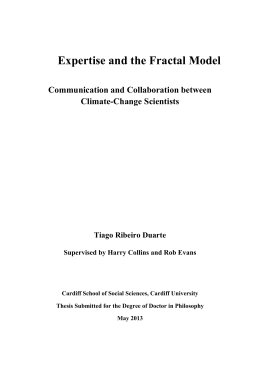Instituto de Engenharia Biomédica Porto, Portugal http://www.ineb.up.pt/ PSI Group © JP Marques de Sá, 2001 [email protected] Classification of foetal heart rate patterns based in fractal models Objective: The project aims at FHR (foetal heart rate) pattern classification based on fractal features. Methods and Results: A set of 124 FHR sequences were processed. The sequences of this set were classified by an expert obstetrician in each of 3 classes: 31 cases from class A, corresponding to normal NEM sleep; 50 cases from class B, corresponding to normal REM sleep; and 43 cases from class FS corresponding to foetuses with neuro-cardiac depression. FHR sequence samples from these 3 classes are shown in figure 1. For the pre-processing task, a FHR sequence reconstruction method was developed which corrects foetal monitors errors, namely missed detections of heart beats and/or detection of false beats (C. S. Felgueiras et al., Bioeng’96, 1996). 2000 Class A Class A Class B Class FS 1500 Class FS L(k) FHR (bpm) 154 148 1000 Class B 500 133 0 5 10 Time (mi n) 15 20 0 0 20 40 60 80 100 k Figure 1. Examples of FHR sequences. Figure 2. Higushi method for fBf’s L(k)=SkH-1. The modelling used two approaches: temporal fractal and sequence attractor. The modelling of a FHR sequence by a temporal fractal (fractional Brownian functions, fBf) consists in the estimation of Hurst exponent, H, and the specific length, S, of the signal using Higushi method. For the studied FHR sequences it was verified that they can be modelled by bi-scale fBf’s with two distinct parameter pairs (H, S) for two temporal resolution ranges (Figure 2). The estimated features have shown the following distribution: Class A B FS H1 0.49±0.13 0.63±0.07 0.55±0.10 H2 0.11±0.09 0.27±0.08 0.21±0.12 S1 7.46±0.42 7.64±0.28 6.60±0.36 S2 8.38±0.46 8.58±0.36 7.51±0.52 k 12±3 13.5±3.5 14.2±4.6 The FHR sequence attractor was estimated by delay plots where fractal dimensions (capacity, information and correlation) were measured using box counting methods. Given the small number (<32) of distinct values that are present in the FHR sequence the Procaccia-Grassberger algorithm was used. For the classification task we used these fractal features to design a linear discriminant for classifying the 3 FHR patterns classes. For the studied set, the training error was 7.3% and the test error was 15.4%. This classification method was found to be better than the classical, short-term variability (STV) based method (C. S. Felgueiras et al., 1998). Research leader: J.P. Marques de Sá Instituto de Engenharia Biomédica Porto, Portugal http://www.ineb.up.pt/ PSI Group © JP Marques de Sá, 2001 [email protected] Team: Carlos Felgueiras, J.P. Marques de Sá, Sílvio Gama, J. Bernardes. Other Collaboration: Serviço de Obstetrícia e Ginecologia - HSJ. Financing Institution: FCT. Duration: 1 year (September 1995/ September 1996). Simulation of FHR fractal behaviour Objective: To simulate the fractal behaviour of foetal heart rate signals (FHR) for realistic simulation of CTGs (see project Fetal Distress Simulator). Methods and Results: Fractal behaviour of FHR signals corresponds to the small scale features known as short and long term variability (STV, LTV). This behaviour, as shown in project B.1, is characterised by a bi-scale fractal with two coefficients H1, H2 ε ]0,1[, governing the signal “wiggly aspect” and a factor k governing the scale change (in number of beats). This fractal signal has to be generated in such a way that it will mimic the desired percentages of normal STV and LTV, depending on physiological and pharmacological variables. For this purpose we have developed an algorithm based on the well-known mid-point displacement method of temporal fractal generation. For several sets of the fractal parameters (H1,H2,k) several realisations of the signals were generated. The signals were afterwards processed in order to estimate and hopefully confirm their fractal parameters. This estimation showed that the fractal behaviour is simulated with enough accuracy with the capability of yielding controllable percentages of normal STV and LTV. Research leader: J.P. Marques de Sá Team: Carlos Felgueiras, J.P. Marques de Sá, Raul Carvalho, Sílvio Gama. Other Collaboration: Serviço de Obstetrícia e Ginecologia, Hospital de S. João. Leader Organisation: INEB. Financing institution: INEB. Duration: 1 year (September 1998/ September 1999).
Download
